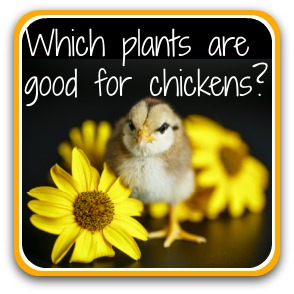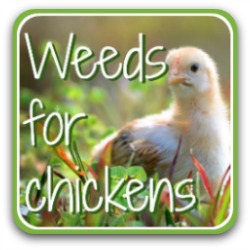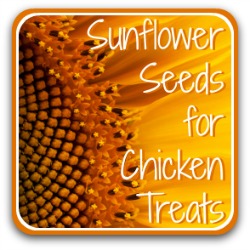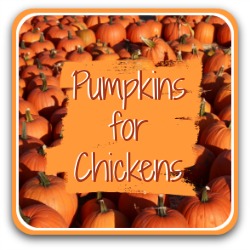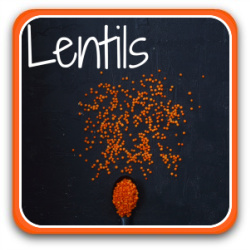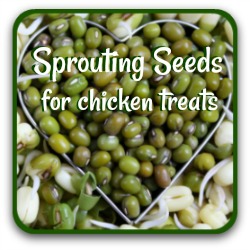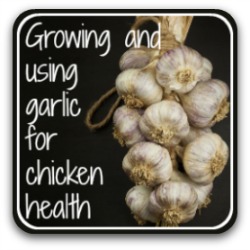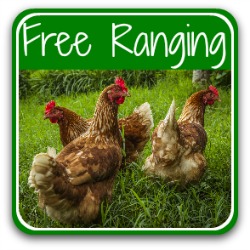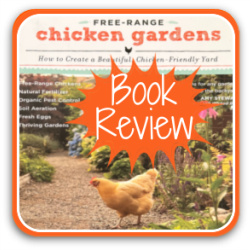- Home
- Plants for Chickens
- Nettles
Stinging nettles for chickens: a natural boost for your flock.
Can chickens eat stinging nettles?
Yes, and when prepared the right way they’re one of the easiest, healthiest and cheapest supplements you can add to your flock’s diet.
In this guide I’ll cover their proven benefits, how much to feed, the best ways to prepare them, and a few simple recipes your hens will love as much as mine do.

🪶 Featherlight Takeaways.
Quick insights from this article – perfect if you're looking for a free, natural flock boost.
- Chickens can eat stinging nettles, but only when dried, wilted, or cooked (not raw).
- Nettles are rich in vitamins A, C, and K, plus calcium, iron, and antioxidants for bone strength, healthy blood, and better immunity.
- No negative effects were found in studies — only benefits.
- Nettles’ pigments help hens lay eggs with naturally deeper orange yolks.
- Easy to grow (though best contained!) and free to harvest.
- Feed about 1 tablespoon per kilo of feed for nutrition, or 1 teaspoon per kilo for yolk color.

This is a long, detailed article. Use these links to jump to a section you need, or carry on reading for all the information.

The nutritional benefits of stinging nettles for chickens.
Nettles have been valued in human folk medicine for centuries, and modern research confirms their nutritional power for chickens too.
Low in calories and high in water and fibre, they are surprisingly nutrient-rich.
Here's how they help:
- Stronger blood and immunity: crushed nettles were shown to improve red blood cell concentration for extra energy, help blood clot more quickly (helpful after a predator attack) and increase white blood cells which support the immune system (1, 2, 3).
- Bone and eggshell strength: high levels of Vitamin K, calcium, potassium, magnesium and iron in nettles promote healthy bones and better eggshell quality(1, 2, 3).
- Powerful antioxidants: improve overall cell health, reduce long-term disease risk, boost vitality (4, 5).
- More resilient hens: high levels of Vitamins A and C support egg production and help deal with heat stress(6).
- Researchers found no harmful effects from feeding nettles – only benefits.
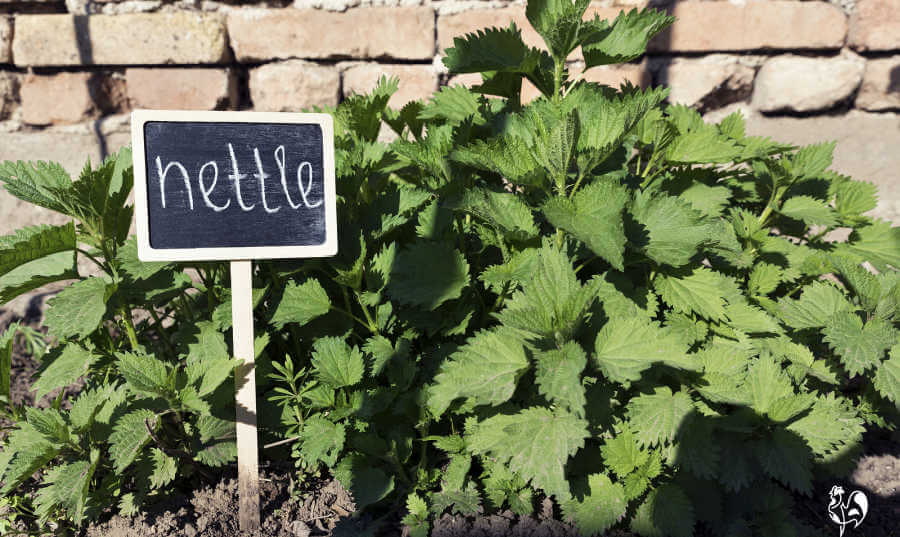

Do nettles help with worms and mites?
There's no evidence that feeding nettles in any form will prevent internal or external parasites. They can’t replace a proper parasite management plan.
But by strengthening the immune system and improving overall health, nettles do help chickens stay more resilient, which makes them better able to cope with everyday stresses.

Why nettles are good for chicken eggs.
If you’ve ever admired those rich, orange yolks in other people's photos, nettles can help you achieve them naturally. Their high carotenoid content enhances yolk colour without chemical additives.
Alongside marigolds, nettles are one of the best natural ways to brighten egg yolks while adding extra nutrition for your flock.

How to identify stinging nettles.
The common or stinging nettle (Urtica dioica) is a hardy perennial you’ve probably brushed against before! They thrive in fertile, nitrogen-rich soil, especially near compost heaps, and grow back year after year.
Spot them by:
- Tall clumps which can grow up to 7 feet high
- Serrated leaves, light green when young, darker with age
- Fine stinging hairs that irritate skin when touched
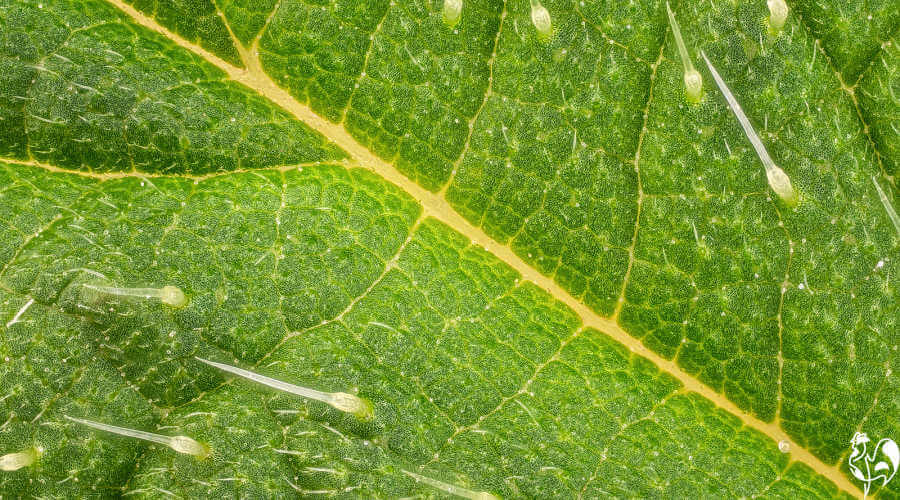 Nettle stings on a leaf under a microscope.
Nettle stings on a leaf under a microscope.- Creeping roots spread aggressively and can take over your garden if not contained
- Small, yellow-green dangling flowers from May to September which spread their seeds in the autumn, creating very fast growth.
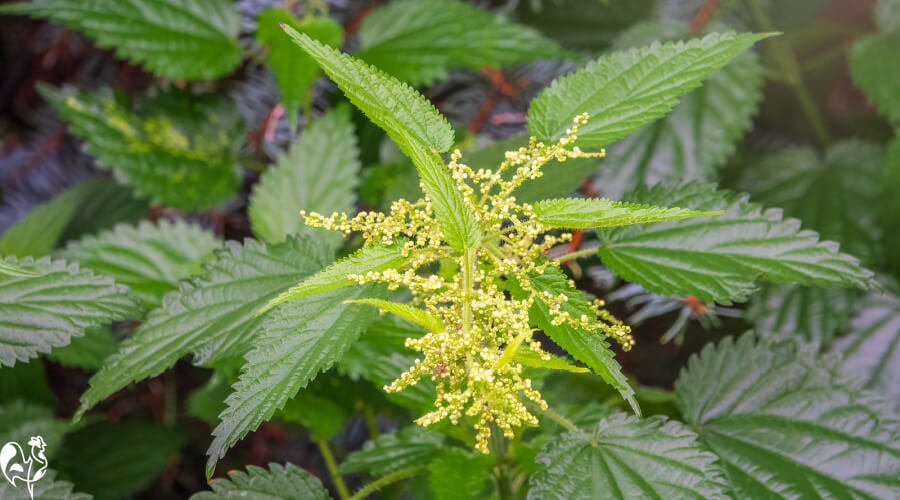 The flowers look unspectacular, but hold seeds which can be used to propagate.
The flowers look unspectacular, but hold seeds which can be used to propagate.Pro Tip: to keep stinging nettles under control, grow them in pots or a raised bed.

How to grow and contain nettles.
Stinging nettles are often dismissed as a weed but they’re technically a herb, and a very useful one when it comes to chicken keeping.
They're one of the easiest "herbs" to grow, being hardy and coming back every year without the need for growth hormones or pesticides.
But they will quickly take over if not controlled.
So there's no need to start with a lot of plants. Even two or three will spread widely and make a large nettle bed after one or two years.
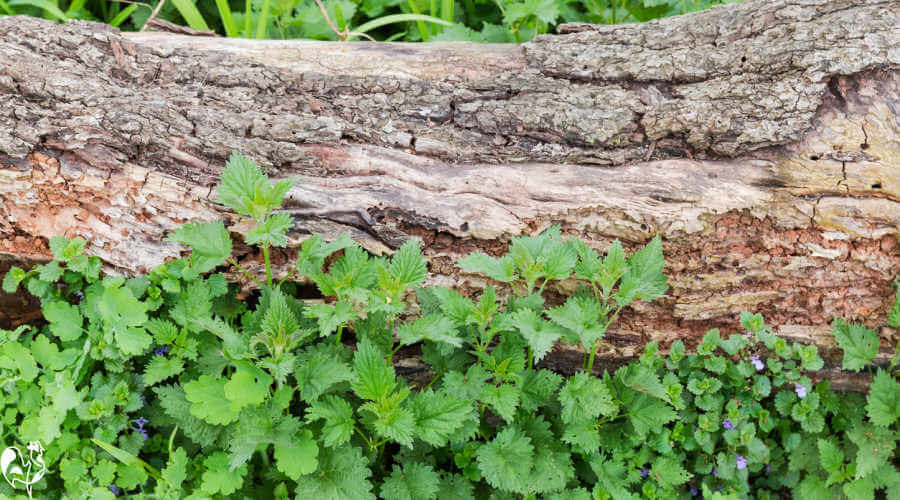 No nettles of your own? Look in local woodland!
No nettles of your own? Look in local woodland!Here's how to grow nettles for chickens.
- Start with a plant, not seed: seeds are slow and unreliable; young plants or cuttings establish much more quickly.
- Grow from an existing plant root: this is the easiest way and can be done at any time of year. Dig up a small, existing young plant with its own root system and plant the roots about 5cm (2") deep in potting compost or soil from your garden.
- Keep well watered and sheltered from frost until they're established. Two weeks should see a good root system developing.
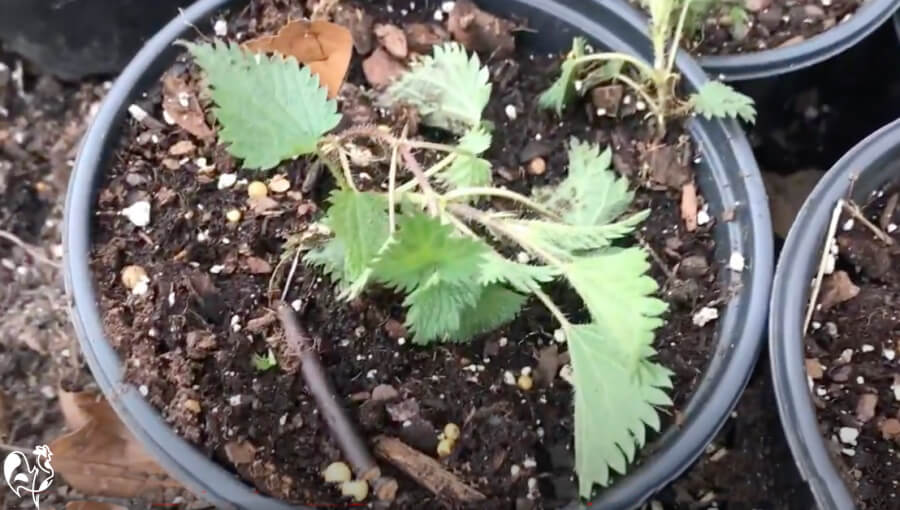
- Best conditions: nettles thrive in fertile, nitrogen-rich soil, so try planting out about 12" apart, near your compost heap. They grow well in either sun or partial shade.
- Contain them: unless you want a garden full of nettles, plant them in pots, raised beds, or a defined patch of soil.
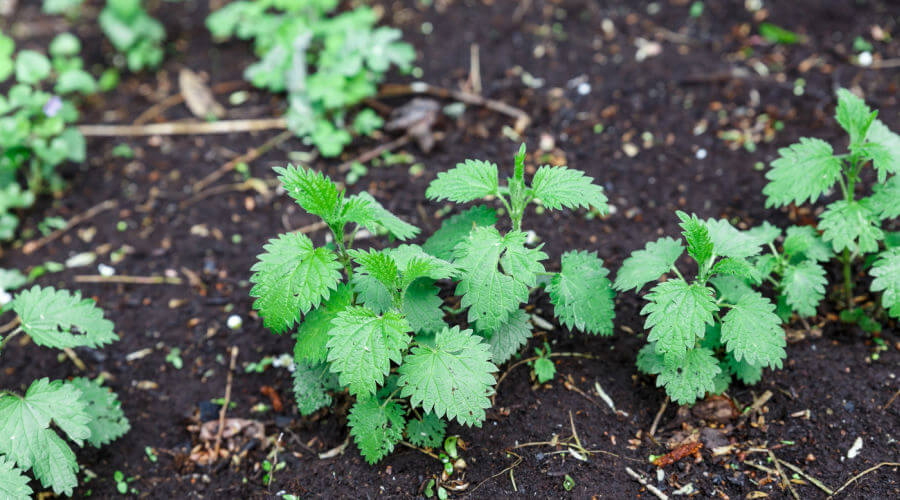
Bonus: nettles aren’t just good for your flock, they’re also a valuable plant for pollinators like bees and butterflies.
A note about bird flu: wild birds are known to be carriers and spreaders of avian influenza. Given that your nettle bed will attract garden birds, either keep it away from your chickens' area; put some chicken wire around the nettles when they begin to set seed; or cut them down before they have the chance to develop flowers.
For more information about bird flu see my detailed article, here.

Harvesting nettles – without the sting!
If you’ve ever brushed against a nettle, you know the sting isn’t pleasant. The good news is, it’s easy to avoid when harvesting. If you’re growing your own, let plants establish well before heavy cutting, ideally waiting until their second year.
- Harvest before flowering: older leaves become tough and gritty.
- Wear gloves: thick gardening or leather gloves work best.
- Cut above the base: take the top few inches of tender shoots, especially in spring. They’re the most nutritious and easiest to use.
- Encourage regrowth: cutting nettles down to about 5cm (2") from the ground will help them produce fresh new shoots.
- Nettles will keep producing throughout the season, so they're a renewable source of free feed.
You may, like me, have been told as a child that rubbing the broad leaves of the dock plant (Rumex obtusifolius) on the sting will counteract the stinging sensation.
But there's no clear evidence of any chemical effect.(4, 5) It may be the rubbing just helps distract from the sting, or that believing it will work makes it so!
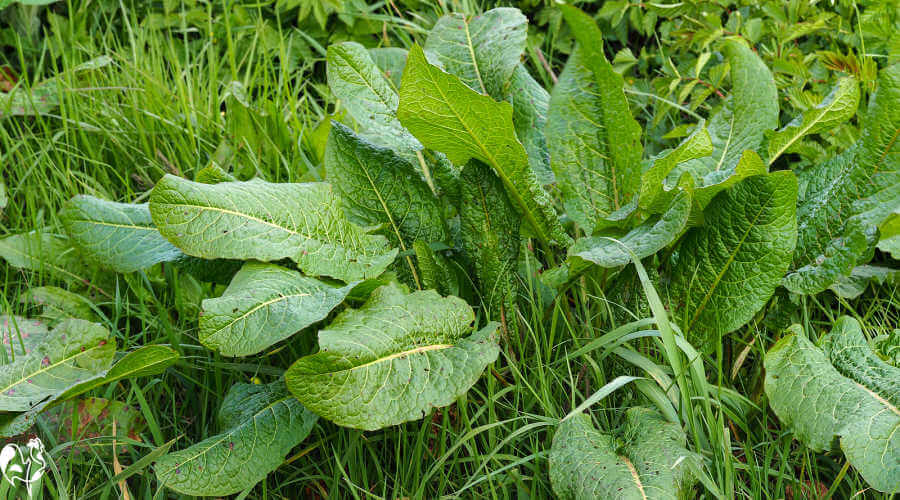 Broad leaved docks, said to help counteract nettle stings.
Broad leaved docks, said to help counteract nettle stings.
How to feed stinging nettles to chickens.
Quick Answer: Chickens can eat stinging nettles safely once they’re dried, wilted, or cooked.
- For a general health boost: feed 1 tablespoon dried/powdered nettles per kilo (2.5 lbs) of feed.
- For richer yolk colour: feed 1 teaspoon per kilo (2.5 lbs).
(Tip: Start with small amounts so your flock gets used to the taste.)
Preparing nettles for chickens.
Chickens won’t usually touch raw nettles — and you wouldn’t want them to! The sting needs to be neutralized first.
You can do this by:
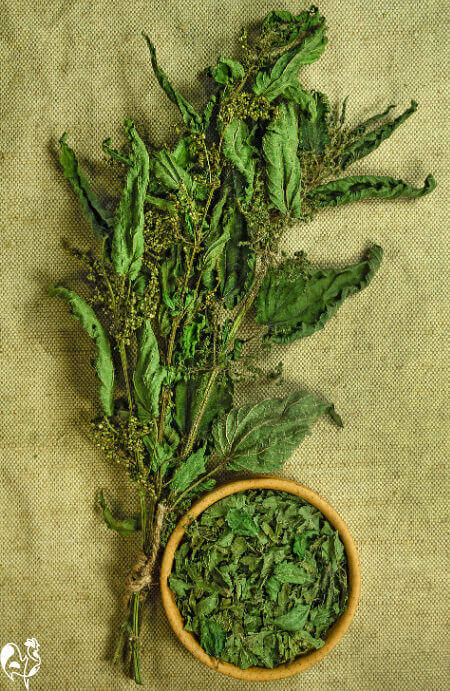
- Drying: the simplest and most common way
- Cooking: blanching, steaming, or sautéing
- Wilting: leaving fresh nettles out for a few hours
- Crushing: lightly bruising the leaves
- Wearing gloves, cut the nettles and let them wilt for a few hours.
- Strip leaves from stems and wash.
- Dry using a dehydrator (12 hrs on low) or air-dry on parchment for 3-4 days.
- Once leaves are brittle, crumble or grind into a powder.
- Store in an airtight jar for up to a year.
Drying is the easiest way to prepare nettles for regular feeding. Here's how:
Don’t have nettles nearby? Nettle powder (affiliate link) is inexpensive and widely available online.

Recipes for using nettles as chicken treats.
You don’t need to get fancy, just add a teaspoon (or more, depending on how much you’re making) of powdered nettle to any of your usual chicken treat recipes.
But if you’d like to try something different, here are a few simple ideas:
-
Nettle Tea
Steep dried nettle leaves in hot water, strain, and offer cooled tea in a separate bowl. You can also use it as the liquid for fermented feed. -
Sautéed Nettles
Lightly cook fresh nettles in a splash of oil until wilted and crisp. Serve cooled on a treat tray. -
Nettle Pancakes (special treat!)
Mix nettles into a simple flour-egg-water batter and cook like ordinary pancakes. Because this is a rich recipe, keep it for occasional use only.
Remember: treats should only form a small part of your chickens’ diet. Nettles work best as a supplement alongside their usual balanced feed.
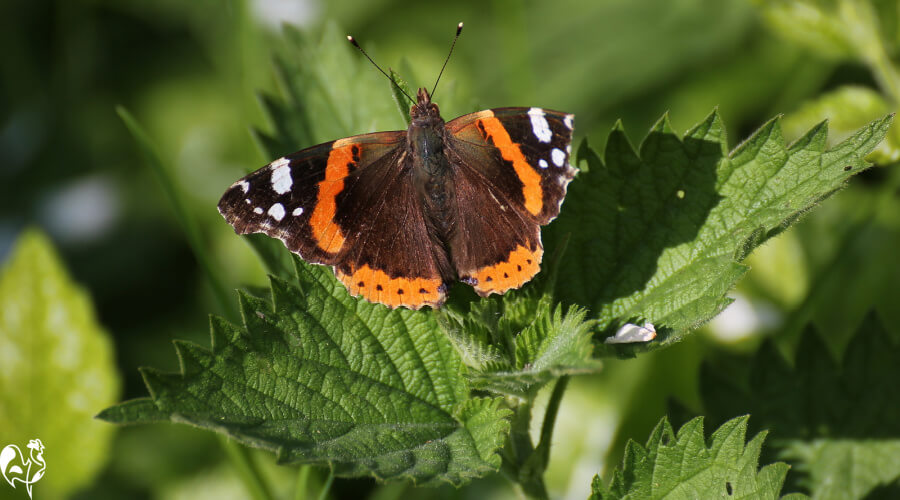

Final thoughts.
Stinging nettles might seem like nothing more than a garden nuisance, but for chicken keepers they’re a free, renewable, and highly nutritious supplement. From boosting immunity and bone strength to naturally deepening yolk colour, they offer big benefits with very little cost or effort.
Whether you grow your own patch, forage carefully, or buy ready-made nettle powder, adding a small amount to your flock’s diet can make a noticeable difference. It’s an easy, natural step toward healthier hens and better eggs.
Enjoy!

Frequently asked questions.
Are nettles poisonous for chickens?
Are nettles poisonous for chickens?
Not at all. Studies have shown no ill effects at all when chickens are fed properly prepared nettles or nettle powder.
In fact, they have consistently been found to add to chicken health and well-being.
Can chickens eat raw stinging nettles?
Can chickens eat raw stinging nettles?
No. They're not unsafe, but raw nettles still have their sting, and most chickens won’t touch them.
Once dried, wilted, or cooked, nettles lose their sting and are good to feed.
Are the seeds and stems safe to feed to chickens?
Are the seeds and stems safe to feed to chickens?
The leaves are the most nutritious and commonly used part of the nettle. Stems tend to be tough and fibrous, but they're perfectly safe when dried or cooked.
Seeds are edible too, though they’re more often used for propagation than feeding.
Can baby chicks eat nettles?
Can baby chicks eat nettles?
Yes, but only in very small amounts and always dried or powdered. Start with a tiny pinch mixed into chick starter feed after the first few weeks.
Will nettles help chickens lay more eggs?
Will nettles help chickens lay more eggs?
No. Nettles won’t increase the number of eggs, but they can improve quality by boosting yolk colour and shell strength.

Feeding chickens naturally: other articles you may enjoy.

Sources.
A lot of "facts" you'll find on the internet are often people's individual views, based on inaccurate information repeated from poor quality sources.
The information I provide in this article and others is based not just on my own experience, but on evidenced facts from scientific, peer-reviewed research and books from highly respected and experienced poultry keepers such as Gail Damerow.
Some of the trusted sources I have used in this article are these.
1. Abdul-Majeed, A. F., et al: Effect of adding nettle plant on some physiological and biochemical parameters of broiler chickens. Pub. Iraqi Journal of Veterinary Sciences, 2010.
2. Pant, V, and Sundriyal, R. C.: Nutritional and therapeutic efficacy of stinging nettle: a review. J Ethnobiology and Traditional Medicine, 2016.
3. Keshavarz, M et al: Growth performance, blood metabolites, antioxidant stability and carcass characteristics of broiler chickens fed diets containing nettle (Urtica dioica) powder or essential oil. Pub. International Journal of Advanced Biological and Biometric Research, 2014.
4. Viegi, L, et al: A review of plants used in folk veterinary medicine in Italy as basis for a databank. Pub. Journal of Ethnopharmacology, 2003.
5. Nettles as weeds. Pub. Royal Horticultural Society, 2022.
6. Jones, A. M: The cist on Whitehorse Hill - Current Archaeology. Pub. Journal of Current Archaeology, 2016.
7. Loetscher, Y, et al: Utility of nettle (Urtica dioica) in layer diets as a natural yellow colorant for egg yolk. Pub. Journal of Animal Feed Science and Technology, 2013.
8. Schmelzer, E., and Lindner, C: Nettle cultivation for feeding poultry. Pub. Bioland Beratung, 2021.
- Home
- Plants for Chickens
- Nettles
